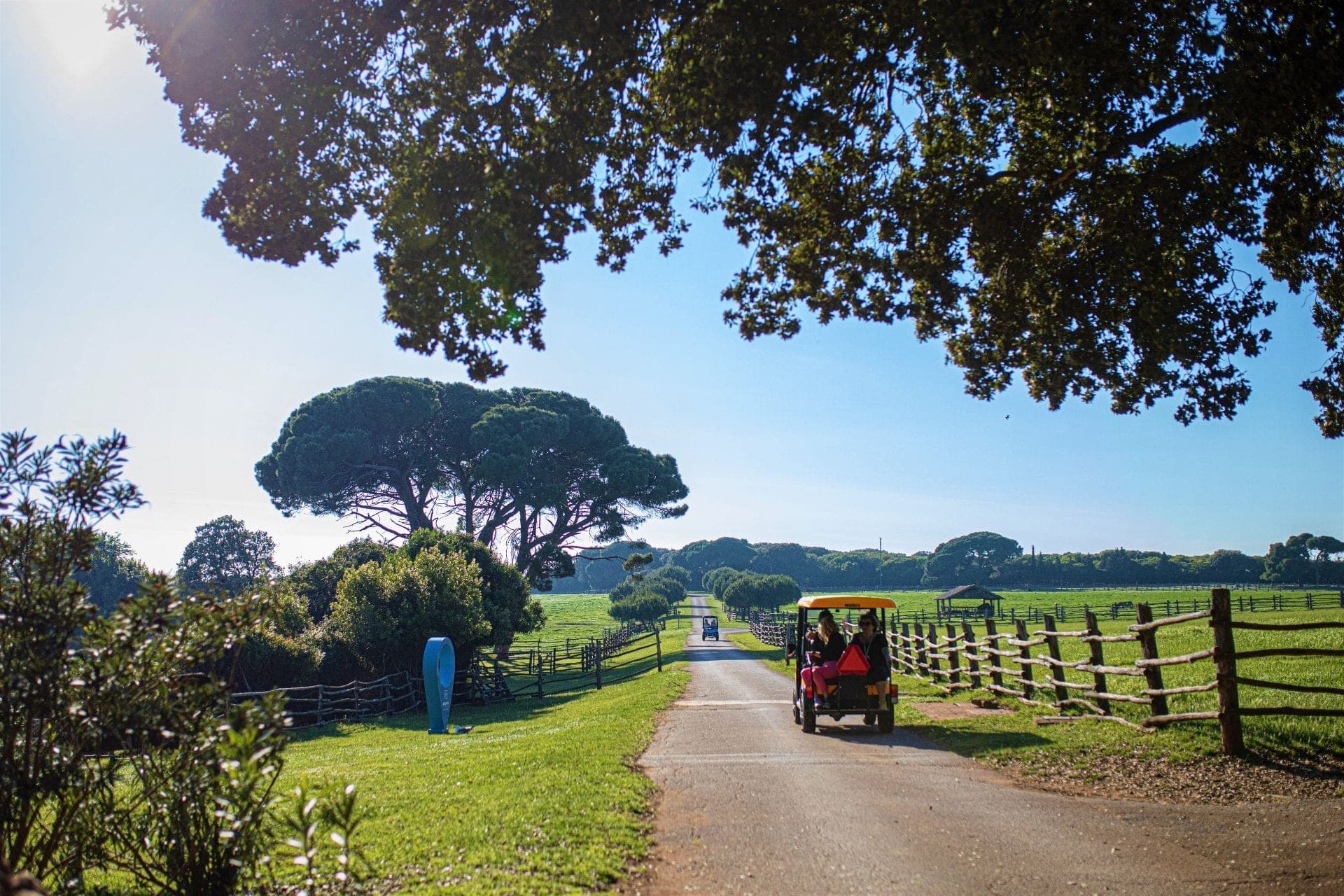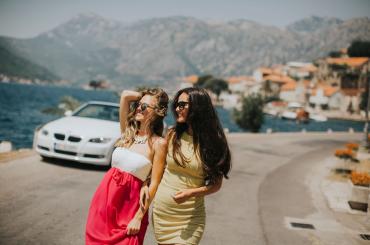
Tour Croatia+ trip
This unique 11-day tour is enough for a lifetime of memories in diverse wonders of nature and architectural marvels of Roman and medieval architecture along the Adriatic coast. This is a partially guided tour, but upon request, you can upgrade it to a fully guided tour.
Extremely versatile trip designer with an established career in travel business
Fill out a few details and get a detailed itinerary with all inclusions and trip details - we can customize them together
If you live in a bustling city, there is no way you don’t enjoy escaping to the outdoors. Whether you’re an ordinary nature-lover, experienced outdoorsman, or just a city-dweller dreaming of resting your eyes on some green, there’s no better place to experience it than by visiting Croatia. Nine per cent of the country is designated as a natural protected area. Among the 444 protected areas of Croatia, there are 8 national parks, 2 strict reserves and 11 nature parks. Five national parks you will visit offer a mix of everything you love, from mountainous sceneries, famous lakes and waterfalls to streams and numerous “photo opportunity” locations.
While you may not identify as an "architecture buff", surely you are a traveller who acknowledges refined classical architecture. We’ll take you through cities and towns wherein each stone lies a story, and some buildings construction dates count not in centuries, but millennia.
Roman amphitheatre in Pula was built between 27 BC and 68 AD. It hosted gladiatorial combats until the 5th century AD
Before you start your trip, take a minute to get acquainted with the places you are about to visit.
Zagreb
Zagreb is extraordinary, offering to its visitors a baroque-like feeling of the Upper Town, green parks and promenades, top culinary pleasures and a relaxing atmosphere. The city provides a great example of a central European metropolis of relaxed Mediterranean rhythm. You can hear quite often that Zagreb is a tailor-made city, not too big, not too small, yet big enough to offer the feeling of a European metropolis, and small enough to be covered on foot.
Opatija
Since Roman times Opatija has been a „spa town“offering rest and recreation to its numerous visitors. With all the sun-drenched pleasures of the European resort town, its grand villas, subtropical botanical gardens, old-style grand hotels, wide boulevards and busy marinas.
Pula
Pula, a seafront city on the tip of Croatia’s Istrian Peninsula, is known for its protected harbour, beach-lined coast and Roman ruins. The population of Pula stands at just over 62,000 making it the largest city in Istria. Its most famous attraction, the well preserved Roman amphitheatre, is one of the most famous sights in the whole of Croatia.
Poreč
Visit the antique town of Poreč and its complex of sacral buildings erected during the time of Bishop Euphrasius (6th century AD). One of the reasons why this complex is registered on the UNESCO's List of World Cultural Heritage is also the apse of Basilica which is with its ornamental decorations with figural mosaics one of the most remarkable examples of the mosaic art in Europe.
Zadar
Situated at the crossroads of maritime and mainland routes, Zadar County offers explorers 3,000 years of culture, secluded islands and a crystal-clear sea, wild mountains and turquoise rivers. Zadar's historic strength is visible at every corner. The Zadar Forum, the central square of an ancient Roman city, is the largest on the east Adriatic coast. And don’t forget - in Zadar you can always sit next to the Sea Organ, a one-of-a-kind instrument embedded in the waterfront, and listen to the music created by the waves.
Šibenik
Šibenik is the oldest Croatian city on the Adriatic with the famous Cathedral of St. James, inscribed on the UNESCO World Heritage site. The harmonious Cathedral of St. James is the only cathedral in Europe that is made entirely of stone. You won't find any traces of mortar, wood, iron or roof tiles, even in its complex structural frame. This cathedral is the most important architectural monument in Croatia, dating back to the 15th and 16th centuries, and it was constructed using methods that wouldn't be applied elsewhere until centuries later.
Trogir
The small medieval island town of Trogir has been under the protection of the UNESCO. The Cathedral of St. Lawrence, built in the 13th century is one of the most significant monuments in Trogir. Its preserved old town, known for its mix of Renaissance, Baroque and Romanesque buildings, lies on a small island connected to the mainland and the island of Čiovo by bridges.
Dubrovnik
The walls of Dubrovnik girdle a perfectly preserved complex of public and private, sacral and secular buildings representing all periods of the city's history, beginning with its founding in the 7th century. Famous are the city's main promenade Stradun, the Rector's Palace, the church of St. Vlaho, the Cathedral, three large monasteries and the City Hall. The Republic of Dubrovnik was the centre of a separate political and territorial entity during the medieval times, and was proud of its culture, its achievements in commerce and especially of its freedom, preserved down so many tempestuous centuries.
Plitvice Lakes National Park
Nestled in the embrace of the surrounding wooded mountains are sixteen smaller and larger crystal turquoise lakes, Plitvice Lakes are interconnected by foaming cascades and deep falls. The park includes the headwaters of the Korana River in an area surrounded by dense forests and is additionally ornamented by several caves, springs and flower-filled meadows, which show the vast diversity of flora and fauna in the national park.
Brijuni National Park
The archipelago of Brijuni is noted for its valuable cultural heritage from the Roman and Byzantine times. Due to its extraordinary beauty, the Brijuni islands have been, for over a hundred years now, a favourite tourist destination of world statesmen and aristocracy and were formerly the summer residence of President Tito, the leader of Yugoslavia. This group of two larger and twelve smaller islets with a total area of only 7 km2 is known for its preserved Mediterranean vegetation, which is partly landscape and partly national park.
Kornati National Park
A stunning ‘island’ national park with 89 islands, islets and reefs, Kornati National Park stretches over the area of about 220 km2 (54.000 acres). It’s a prime spot for swimming, or snorkeling or diving as well as enjoying the gorgeous surroundings and tranquil nature of the islands. In 1980, the eighty-nine southernmost of the 140-odd islands, islets and reefs of the Kornati archipelago was declared a national park, Nacionalni Park Kornati, protecting the islands and their marine surroundings. The area covered by the National Park mostly coincides with the Donji Kornati, which includes the island of Kornat and the surrounding islets, separated with a channel from the island of Piškera and the surrounding islets.
Krka National Park
Another stunning park with numerous waterfalls, the location of Krka National Park (close to the Dalmatian coast) makes this a popular place worth visiting. Its 17 cascades stretch over 800 m of the riverbed. The water foams and leaps over barriers, sparkling with a turquoise tint in the calmer parts.
The island of Visovac (on which there is a monastery from the 18th century) is one of the attractions in the park. Taking one of the excursion boats is a great way of making your way through Krka National Park.
Mljet National Park
Mljet National Park covers about a third of the green island of Mljet, off the coast of south Dalmatia. The Park was given National Park status in 1960. A lush and tranquil place covered with forests, Mljet National Park is ideal for those who want some relaxation in a gorgeous setting.
Some historians are convinced that, by describing Ogygia, Homer wrote about the island of Mljet. Well, whatever the fact may be, a cave bearing the name of Odysseus, that Greek adventurer, still stands there carved in stone.
Popular theories that have taken root on Mljet also speculate that it was here that that St. Paul shipwrecked rather than Malta. St. Paul's Rock has borne the name of the shipwrecked saint for quite some time now, while the moniker Odysseus' Cave is more recent.
Upon arrival at Zagreb airport, transfer to your hotel for check-in. After a short rest, enjoy a sightseeing tour on foot of Zagreb, including the Upper Town, the city's historical center, the Stone Gate, and the Church of St. Mark with its famed multi-colored roof. Overnight in Zagreb.
After breakfast, depart for Plitvice Lakes National Park, Croatia's most famous national park and a UNESCO World Heritage Site. The park is a magical world of lakes, waterfalls, moss, and forests. A sightseeing walking tour includes a boat ride, allowing you to experience the beauty of the lakes and waterfalls firsthand. (Electric boats and panoramic train rides are subject to weather conditions). Overnight in the Plitvice region.
After breakfast, continue to Opatija, a historic spa town known for its grand villas, subtropical botanical gardens, old-style grand hotels, wide boulevards, and busy marinas. Since Roman times, Opatija has offered rest and recreation to its visitors. Spend the rest of the day at leisure, exploring, relaxing, and enjoying yourself. Overnight in Opatija.
The waters of the Krka River reach the Skradinski Buk cascades as they slow just a few kilometres before the river mouth
After breakfast, depart for Pula, the oldest town on the Eastern Adriatic Coast. Sightseeing includes a visit to the beautiful Roman amphitheater, the Arena. Then drive to Fažana and embark on a boat to the Brijuni National Park. The tour includes a ride in a tourist train, visits to the remains of a Roman villa, a safari park, the archaeological museum, and the Church of St. Germain. On the way back, visit the antique town of Poreč and its complex of sacred buildings, particularly the Basilica of Euphrasius, a UNESCO World Heritage Site. Return to Opatija. Overnight in Opatija.
After breakfast, depart for Zadar. Upon arrival, enjoy a sightseeing tour including the Cathedral of St. Anastasia, the Church of St. Donatus, and the ruins of the Roman Forum. The Church of St. Donatus is one of the few circular medieval churches in Europe. Spend the rest of the day at leisure. Overnight in Zadar.
After breakfast, embark on a full-day guided boat excursion to Kornati National Park. The archipelago consists of 147 islands, islets, and reefs, making it the most indented group of islands in the Mediterranean. Highlights include Fort Tureta, Murter Bay, Salt Lake, and Telascica Nature Park. Enjoy a lunch break and swimming opportunities. Return to Zadar. Overnight in Zadar.
The walls of Dubrovnik girdle a perfectly preserved complex of medieval buildings. The city is a symbol of commerce and freedom in the Mediterranean
After breakfast, depart for Krka National Park, known for its stunning waterfalls and travertine barriers. Visit Skradinski Buk, the park's most beautiful waterfall. Continue to Šibenik for a short sightseeing tour. Šibenik is the oldest Croatian city on the Adriatic and home to the famous Cathedral of St. James, a UNESCO World Heritage Site. After the tour, proceed to Split. Overnight in Split.
After breakfast, enjoy a city tour of Split, the largest city on the Croatian coast. Visit Diocletian's Palace, the Peristyle, Cellars, the Temple of Jupiter, and the Cathedral of St. Domnius. Continue south along the Makarska Riviera and Neretva Valley towards Dubrovnik. Overnight on the Dubrovnik Riviera.
After breakfast, take a city tour of Dubrovnik, the Pearl of the Adriatic. Explore the city's main promenade, Stradun, the Rector's Palace, the Church of St. Blaise, the Cathedral, and three large monasteries. Enjoy the afternoon at leisure. Overnight on the Dubrovnik Riviera.
National Park covers about a third of the island of Mljet, known for its lush green Mediterranean forests
After breakfast, enjoy a full-day excursion to the National Park of Mljet. The park is located in the northern part of the island and features lush Mediterranean flora, Veliko and Malo lakes, and an islet with an old monastery. Return to the hotel. Overnight on the Dubrovnik Riviera.
After breakfast, enjoy free time until your organized transfer to Dubrovnik airport.
We will double-check availability and make reservations for your rooms, restaurants, guides etc.
With reservations confirmed, we will prepare the best offer possible in regard to your arrival date & party size
You will get the offer via e-mail, along with the payment options. Feel free to request further customisations!
9 DAYS
9 DAYS
6 DAYS



